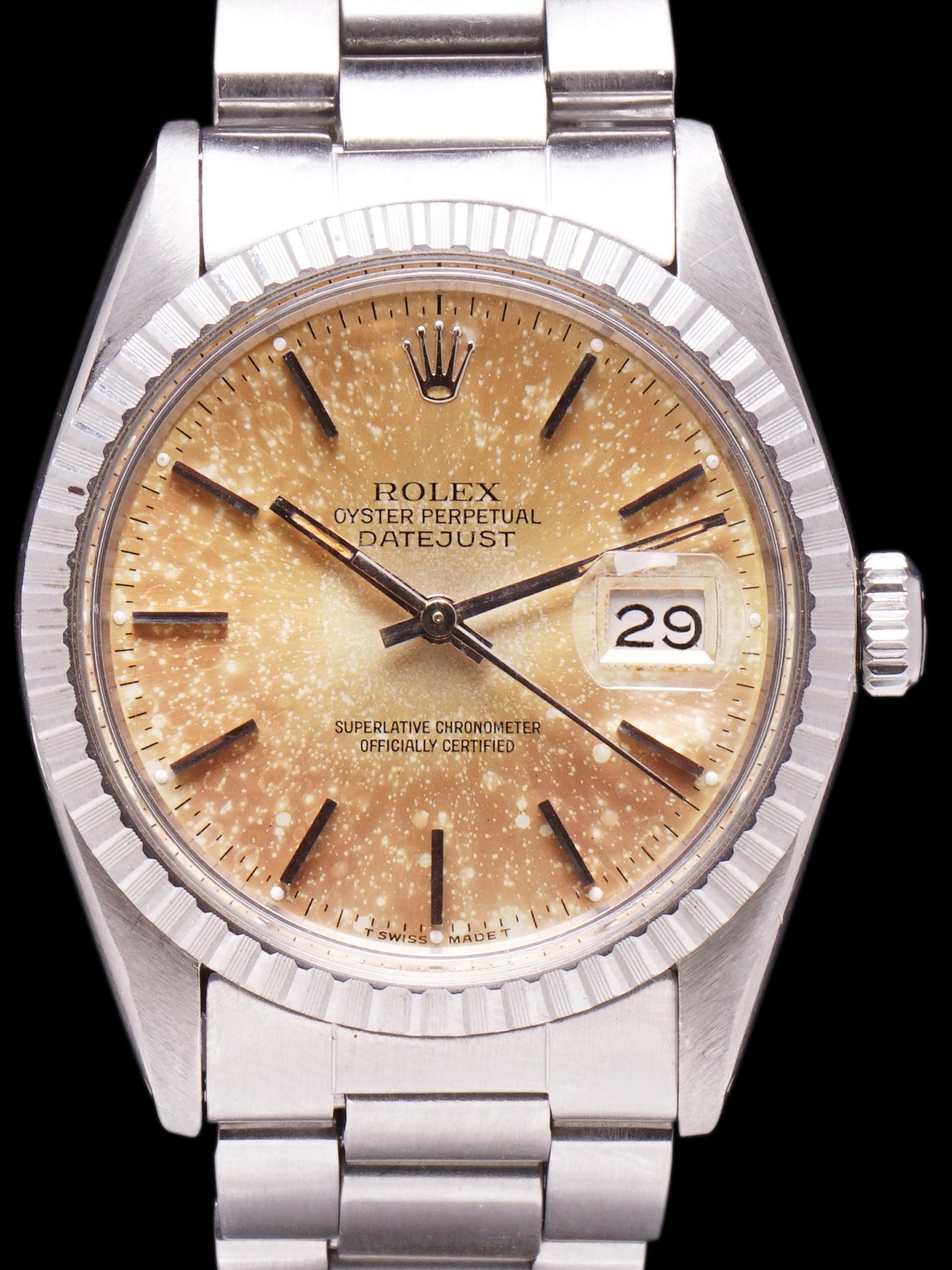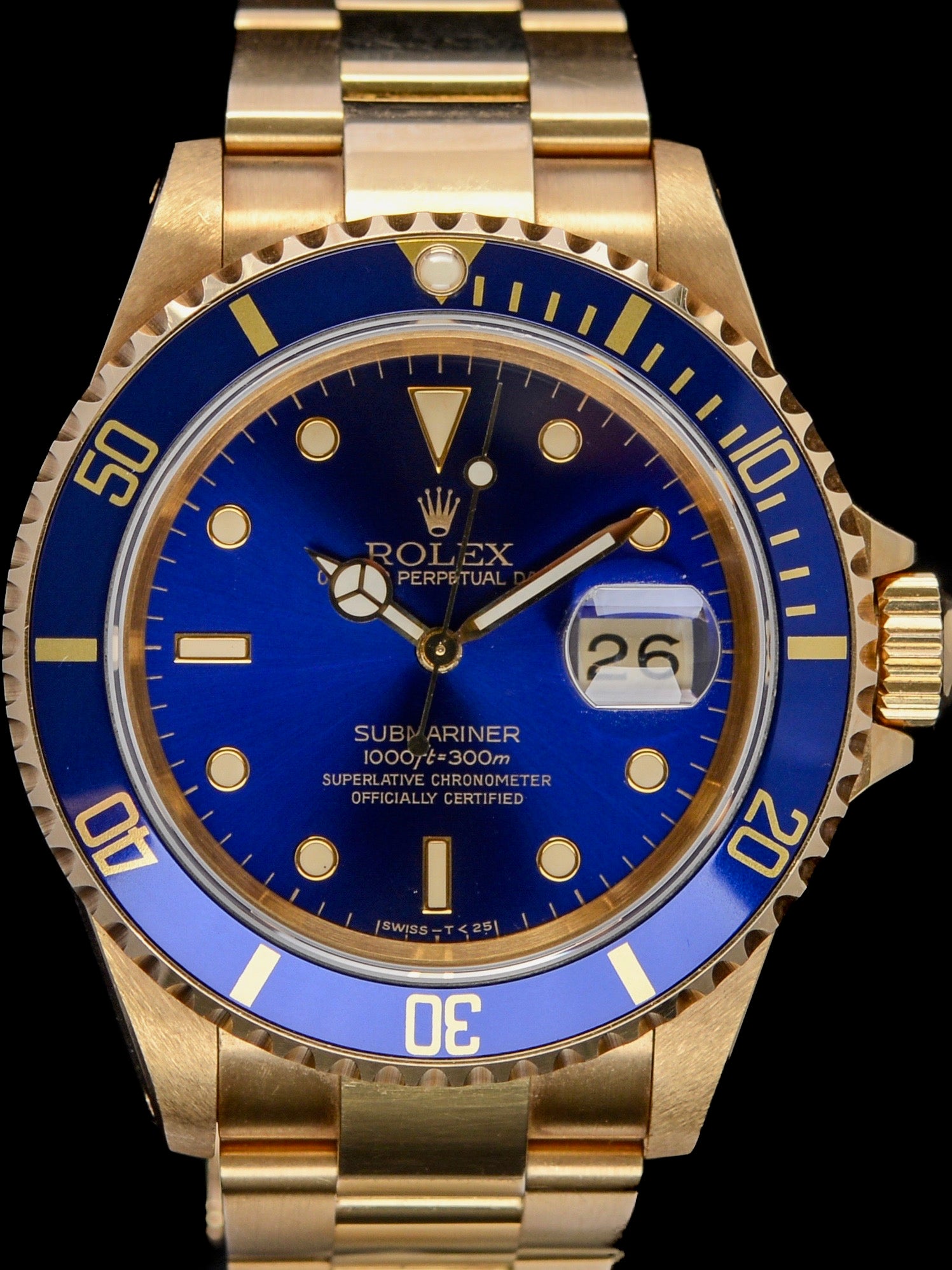Rolex
1990 Rolex Explorer I (Ref. 14270) "Blackout"
The Rolex Explorer 1 ref. 14270 was introduced by Rolex in 1989 as the successor to the ref. 1016. The Rolex Explorer 1 ref. 1016 was in production for 27 years and saw only minor updates to the dial and bracelet, the ref. 1016 largely remained unchanged throughout its 27 years of production. The ref. 14270, however, was a massive technical update to the Explorer 1. The ref. 14270 received a more modern sapphire crystal, a new, faster-beating Rolex Cal. 1570, and then the Cal. 3000 movements. The updates also featured a more modern solid link bracelet with the later era bracelets receiving a smaller flip-lock clasp, and the most notable difference and update from a design visual perspective is a lacquered dial with applied white gold indices that were filled with tritium luminous material and then later with luminova. The Rolex Explorer ref. 14270 has quickly generated a cult-like following, especially the earlier examples that possess tritium-filled markers and hands.
The Rolex Explorer I references bridge the gap between a dress watch and a sports watch. Without the crown guards and rotating bezels commonly found on sports models offered by Rolex, the Explorer I has a cleaner, sleeker profile while incorporating recognizable sports model features into the dial. The highly visible block indices, numerals at the 3 o'clock, 6 o'clock, and 9 o'clock positions, and Submariner style triangle at the 12 o'clock position allow for readability under any conditions. The Submariner-style hands featured on the ref. 14270 adds to the unique feel and appearance. The Rolex Explorer blends the classic and timeless look of a 36mm Rolex Oyster style watch while offering a ruggedness and utilitarian feel that can be worn in the most formal and or casual settings.

One of the most exciting models to come from the neo-vintage era is without a doubt the "Blackout" variant of the Rolex Explorer I ref. 14270. Produced from E serial to early X serial in extremely limited quantities, the Blackout was the first dial variation for the Rolex Explorer after the ref. 1016 was discontinued. The "Blackout" nickname comes from the black enamel used within the 3, 6, and 9 numerals, which makes for a more stealthy aesthetic but was changed to a more visible white enamel shortly after. There are two dial variations within the "Blackout", the silver text variant, and the white text variation, however, it is generally accepted that the silver text dial is the most desirable within the Blackout range. The Blackout also features a unique, extra-long second's hand which was also replaced shortly after production with the introduction of the more commonly seen white enamel numeral dial.
It is extremely rare to find fully original "Blackout" examples, like the one presented here, as it was extremely common for Rolex to change these dials and hands to the more standard dial variant when the watch went back to them for service.
| Stock # | RLXEXP14270-BO | |
| Brand | Rolex | |
| Style | Explorer I | |
| Model | 14270 | |
| Serial | E9XXXXX | |
| Size | Men's | |
| Material | Stainless Steel | |
| Dial | Glossy Black 3-6-9 "Blackout" | |
| Millimeters | 36 | |
| Bracelet | Rolex Oyster 78360 Bracelet w/ 558B End Pieces |
CASE & BRACELET
The exceptional case exhibits a light sleeve polish from wear but no notable evidence of being actually polished in the past. The thick, crisp, and symmetrical lugs show honest signs of gentle use. The smooth stainless steel bezel shows signs of light use. The original Rolex 78360 Oyster bracelet with 558B end pieces retains 12 links that show very minimal stretch and will fit up to a 7 1/4-inch wrist.
DIAL & HANDS
The original and very rare glossy black "Blackout" dial with white gold surround markers, silver text, and black enamel inlaid 3, 6, and 9 o'clock numeral markers is in flawless condition, showing no damage or signs of age. The tritium lume plots feature a bright ivory color with no degradation present under UV light inspection. The handset retains the original extra-long second's hand and the original tritium lume matches the dial perfectly, however, there is a slightly darker patina present in the lume nearest to the handstack which is commonly seen in this era.
ACCESSORIES
None. The watch is keeping time, but the service history is unknown. A movement service can be provided upon request.












